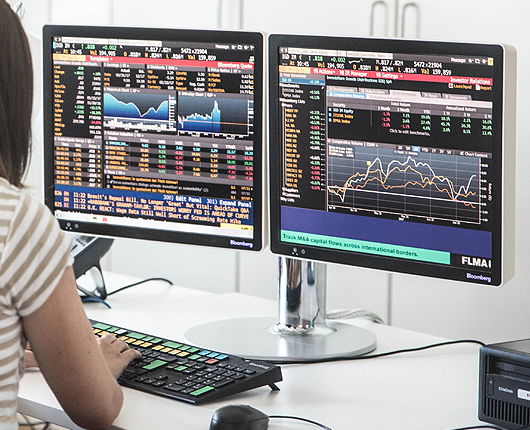Improvement in the global market conditions and solid fundamentals support the good performance of IGD’s stock

IGD’s stock price has risen 15.1% from year-end 2016 through the close on 26 May 2017, outperforming both the Italian index and the European sector index which has risen a modest 3% since year-end 2016.
The improved expectations for economic growth in the Euro zone drove stock markets across the board. IGD also benefitted from the good results for FY 2016, which made it possible to pay shareholders a dividend of 45 cents, as well as the confirmations provided in the results for first quarter 2017.
These positive factors helped to limit the impact on IGD of higher bond yields which weighed heavily on the performance of the European stock market index. The discount at which the stock is trading with respect to the NAV (36%) and the consensus target price (22%) indicate that there is room for further upside.
Source: Italian Stock Exchange and EPRA data compiled by IGD
IGD’s stock price has risen 15.1% from year-end 2016 through the close on 27 July 2017 to €0.833; outperforming both the Italian stock market (+13.7%) and the European sector index (which rose by a more modest 3.0%).
The upswing in IGD’s stock price begun last January peaked on 15 May at a period high of €0.879. Despite the correction between mid-May and the greater part of June, as well as the payment of the dividend of €0.045 on 22 May, by mid-July the stock had already bounced back to levels of around €0.83, testimony to both the favorable environment for equity investments and specific factors linked to the Company’s solid fundamentals.
In the first part of 2017 the improved global market conditions, the upward revision of the estimates for GDP growth in the Euro zone, provided the European stock markets with important support. The results of the elections in the Netherlands and France also helped to mitigate concerns about a populist wave and enhanced the credibility of the reforms enacted by EU partners. The Euro zone markets became a safer harbor for the big international asset managers with respect to the UK, grappling with the difficulties caused by Brexit, and compared to the United States where the impact of the economic policies put in place by the new president has yet to be understood. In Italy, specifically, the lack of early elections next fall caused international investors to revisit the perceived country risk; the solution found by the government, adopted at the end of June, for the persistently critical situation of the banks from the Veneto region also provided similar support. Lastly, the Italian stock exchange also benefitted from the introduction of individual savings plans (PIR or Piani Individuali di Risparmio) which provided encouraging results: the flows generated by this new investment vehicle had a visible impact on small and mid-cap stocks. IGD only benefitted marginally from this new “tax haven” as at least 70% of the PIR portfolios must be invested in financial instruments issued by Italian or European companies with stable operations in Italy, with the exception of real estate companies.
If the stock markets factored in the positive repercussions tied to growth, the European real estate sector was dominated by concerns relating to the ECB’s monetary policy which promises to become less and less accommodating as the economy shows signs of a recovery. IGD’s stock price was not correlated significantly to the performance of the EPRA NAREIT Europe index in the first part of the year; it managed to limit the impact of the increase in yields for Euro zone sovereign debt which typically has a negative impact on real estate stocks.
The specific factors supporting the good performance of IGD’s stock include the ample discount at which the stock is trading with respect to its NAV at 30 June 2017 and the consensus target price. Based on the closing price recorded on 26 July 2017 (€0.833), IGD’s stock is trading at a discount of around 36% compared to the EPRA NNNAV recorded at the end of June 2017 (€1.31). At current levels IGD is also trading at a discount to the average target price of the 7 brokers covering the stock (€1.02) which translates into a potential upside of more than 22%.
Share




